Phonics at Old Sarum Primary
Intent
At Old Sarum Primary we use Twinkl Phonics to deliver high quality synthetic phonics lessons which support and challenge all children in EYFS and Key Stage 1. The children progress through 6 levels as they learn to identify sounds in words and build their repertoire of letters and sounds they can recognise when reading and use in their writing.
Phonics is taught daily with opportunities throughout the day to recap and revisit new learning. The lessons and supporting resources are meticulously planned to allow children to apply and practise phonics skills as they grow in confidence. Twinkl provides an excellent range of additional activities alongside their core resources which teachers can use to engage, challenge and motivate the children in their classes to use the skills they have learned in new and exciting ways.
The Twinkl Phonics Programme intends to not only provide children with opportunities to develop their phonics skills essential for reading and writing, but also, to develop each child’s confidence, resilience and engagement in phonics lessons and a love of reading and writing.
Implementation
Level 1 equips our youngest learners to develop the knowledge and skills to listen closely to environmental sounds, instrumental sounds, words that rhyme and initial sounds, whilst also introducing the key skills of oral blending and segmenting which are essential for phonics learning at all levels. Level 1 is taught in Reception and runs alongside the teaching of other levels.
In Reception, children’s daily phonics lessons begin with Level 2 before progressing through 3 and 4. They learn new sounds and tricky words each week, building upon their previous learning. In Levels 2-4, learners are introduced to phonemes (sounds) and graphemes (letters) systematically, with lots of engaging activities to practise and consolidate their skills. They also learn to develop and apply their blending and segmenting skills for reading and writing CVC words (words containing 3 sounds such as ‘bill’ and ‘shed’). Level 4 introduces children to longer words containing adjacent consonants and gives them opportunities to consolidate the sounds they have previously learnt. Blending and segmenting are especially important in this level as children often need to identify four or more sounds in words like ‘band’, ‘train’, ‘start’ and ‘lift’.
In Key Stage 1, children work within Levels 5 - 6. The coherently planned sequence of lessons within Level 5 allows opportunities for children to apply their phonics knowledge and skills as the prime approach to reading and spelling. It focuses on phonetically decodable two-syllable and three-syllable words and the alternative ways of pronouncing and representing the long vowel phonemes. Furthermore, children will develop their ability to attempt to read and spell increasingly complex words. During Level 6, children explore spelling patterns and grammar while also developing a breadth of knowledge, skills and understanding in the recognition and spelling of common exception words.
Impact
Ongoing teacher assessment happens in-the-moment during all phonics lessons, with teachers supporting children to access the day’s learning and keeping an eye out for children who need further support and/or challenge. Additionally, children will be assessed at the end of levels 2-5 to check their recognition of the new graphemes (letters) learned as well as assessing the accuracy of their word writing and reading.
Twinkl Phonics is designed to build upon children’s prior knowledge and support them in their next steps. If some children need further opportunities to consolidate their learning from earlier levels, the end of level assessments will allow teachers to identify any gaps in their learning and plan interventions to meet their needs and help them make progress. Children may also be taught phonics in mixed classes so that lessons can be tailored to support groups of children working at similar levels to make good progress.
In the Summer Term of Year 1, children complete a phonics screening check designed to check that each child can:
- Sound out and blend graphemes in order to read simple words.
- Read phonically decodable one-syllable and two-syllable words, e.g. cat, sand, windmill.
- Read a selection of nonsense words which are referred to as ‘alien’ words.
This check also allows parents and teachers to identify children who will benefit from additional support with their phonics learning, so that they do not fall behind their peers.
